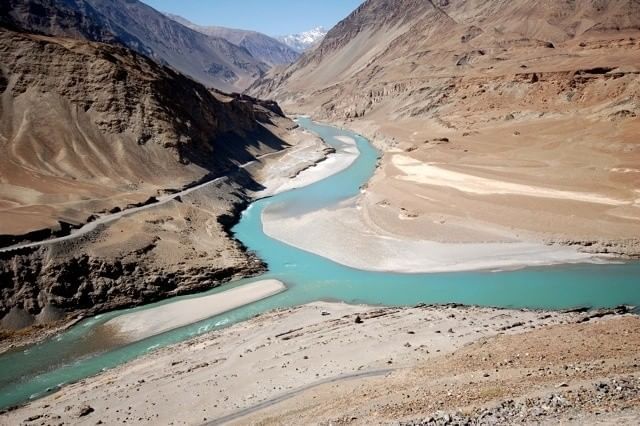Case Based Questions: India, That Is Bharat | Social Studies for Class 6 PDF Download
Q1: Read the source and answer the question that follows
Riya and Aryan are studying ancient Indian texts in their class. Riya is reading the Rig Veda and finds the term 'Sapta Sindhava' used to describe the land of the seven rivers. Aryan shares that in later texts like the Mahabharata, more regions like Kashmir, Bengal, and Kerala are mentioned, and these names still exist today. Riya wonders if the name 'Bharat' has always been used for the Indian Subcontinent. Aryan explains that 'Bharat' became widely accepted after being mentioned in texts like the Vishnu Purana.
Q1, Why is the name 'Bharat' significant in India’s history?
Ans: 'Bharat' has been used since ancient times to describe the entire Indian Subcontinent, linking the present day to its rich cultural and geographical history.
Q2. Why do ancient texts play an important role in understanding the names of regions and lands?
Ans: Ancient texts help us understand the history, culture, and names of regions by showing how people in the past viewed and described their world.
Q3. Which ancient text first used the term 'Bharat' to refer to the Indian Subcontinent?
A) Mahabharata
B) Rig Veda
C) Vishnu Purana
D) Ramayana
Ans: C) Vishnu Purana
Q2: Read the source and answer the question that follows
Aryan and Meera are discussing how ancient foreigners referred to India. Meera mentions how the Persians referred to the region near the Indus River as 'Hind' or 'Hindu' around the 6th century BCE. Aryan explains that this was later adapted by the Greeks as 'Indoi' and eventually became 'India'. Meera adds that the Persian name 'Hind' was not related to the Hindu religion but was purely a geographical term.
Q1. Why did the Persians call the region near the Indus River 'Hind'?
Ans: The Persians called the region near the Indus River 'Hind' because it was a geographical term, not related to the Hindu religion. It referred to the land near the Indus River.
Q2. How did the Persian term 'Hind' influence the modern name 'India'?
Ans: The term 'Hind' was adapted by the Greeks as 'Indoi', which later became 'India', and is still used worldwide today.
Q3. What is the significance of the Persian term 'Hind' in understanding the history of India's name?
A) It shows the religious influence on the name
B) It highlights the geographical and cultural understanding of the region
C) It refers to a specific kingdom in India
D) It was the first official name used for the region
Ans: B) It highlights the geographical and cultural understanding of the region
Q3: Read the source and answer the question that follows
While reading a poem about India’s geography, Arjun and Priya continue discussing how the poem not only gives a clear picture of India’s geography but also reflects the ancient Indians' deep knowledge of their environment. Priya explains that this literature highlights the regions stretching from the southern tip, Cape Kumari, to the great northern mountains, demonstrating how the country was understood as one unified landmass. They realize that the ancient people not only recognized the physical features of the land but also understood the connections between different regions, such as the rivers and mountains that shaped the culture and lifestyle. This understanding is significant as it shows that geography played a key role in the way ancient Indians viewed their land and identity.
Q1. What does the poem reveal about how ancient Indians viewed their land and its regions?
Ans: The poem reveals that ancient Indians viewed their land as one unified landmass, stretching from the southern tip, Cape Kumari, to the great northern mountains, highlighting the geographical connections between various regions.
Q2. How did the ancient Indians' understanding of geography influence their culture and lifestyle?
Ans: Ancient Indians' understanding of geography, such as the connections between rivers and mountains, influenced their culture and lifestyle by shaping their settlements, agriculture, trade routes, and overall way of life, reflecting the close relationship between geography and culture.
Q3. What is the main message conveyed through the poem about India’s geography?
A) India was divided into many small regions
B) India was seen as one unified landmass
C) Rivers were the only important features of India’s geography
D) The poem focused mainly on mountains and forests
Ans: B) India was seen as one unified landmass
|
46 videos|231 docs|28 tests
|
FAQs on Case Based Questions: India, That Is Bharat - Social Studies for Class 6
| 1. भारत की संस्कृति में विविधता का क्या महत्व है? |  |
| 2. भारत की स्वतंत्रता संग्राम में कौन-कौन से महत्वपूर्ण आंदोलन हुए थे? |  |
| 3. भारत के संविधान का निर्माण कब और कैसे हुआ? |  |
| 4. भारत की भौगोलिक विविधता के प्रमुख पहलू कौन से हैं? |  |
| 5. भारतीय त्योहारों का सामाजिक जीवन पर क्या प्रभाव पड़ता है? |  |
















